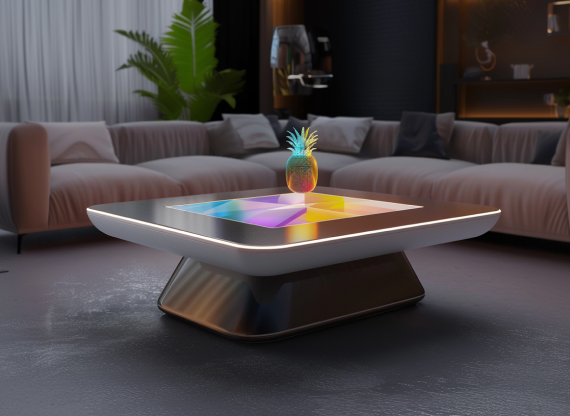In an era where digital content consumption is constantly evolving, the need for more interactive and engaging experiences has never been greater. Traditional systems have focused primarily on visual and auditory interactions, leaving a vast potential for innovation in multi-sensory engagement. Enter the groundbreaking patent for a content interaction system and method for smart furniture, designed by Chamli Tennakoon. This invention introduces a unique and immersive multimedia experience, seamlessly integrating various senses, interactive elements, and personalized features through sophisticated hardware and software. Let's explore how this revolutionary system is set to transform digital media interaction across diverse applications and industries.

The Future of Smart Furniture
Sensory Integration: A Multi-Sensory Experience
At the core of this innovative system is the seamless incorporation of multiple senses—sight, sound, smell, taste, and touch. Here's how each sense is engaged:
- Sight: High-quality displays and advanced projection systems deliver stunning visuals, including 3D holograms, ensuring exceptional visual clarity and depth
- Sound: Immersive audio output devices, such as advanced speakers and headphones, provide clear and dynamic soundscapes, enhancing the auditory experience.Taste: Taste simulation systems recreate specific flavors related to the content, offering a unique dimension to the multimedia experience.
- Smell: Aroma-generation mechanisms release relevant scents corresponding to the content, enriching the user experience by engaging the olfactory senses.
- Touch: Touch-responsive surfaces and haptic feedback technologies allow users to feel and interact with the content, adding a tactile component to the interaction.
Interactive Elements: Enhancing User Engagement
Interactive Elements: Enhancing User Engagement
The smart furniture system includes various interactive elements that facilitate active user engagement:
- Touchscreens: Enable direct interaction with the content through touch.
- Motion Sensors and Gesture Recognition: Allow users to control and navigate content using physical movements.
- Voice Commands: Provide a hands-free way to interact with the system, enhancing convenience and accessibility.
One of the standout features of this system is its ability to provide personalized content recommendations. Using sophisticated algorithms, the system analyzes user behavior and preferences to deliver content that is relevant and engaging. This personalization ensures that users receive tailored experiences based on their interactions and historical data, keeping them engaged and satisfied.
Personalization and Recommendation: Tailored Content for Every User
Advertisers and marketers can leverage the collected user data to design targeted advertising campaigns. By understanding users' sensory engagement patterns and preferences, advertisers can create personalized promotions that resonate more deeply with their target audience. For example, a food brand could tailor ads to users who frequently engage with taste and smell interactions, offering a more relevant and engaging experience.
Cross-Platform Integration: Seamless Transitions Across Devices
Designed for cross-platform compatibility, the content interaction system allows users to seamlessly transition between different devices, such as smartphones, tablets, computers, and smart TVs. This ensures a consistent and uninterrupted user experience, no matter the device being used. The ability to integrate across platforms enhances the flexibility and accessibility of the system, making it a versatile solution for various digital media applications.
Applications and Benefits
Entertainment
Enhancing movies, music, and gaming experiences with multi-sensory engagement, making them more immersive and enjoyable.
Education
Providing interactive and engaging learning environments that cater to various learning styles and preferences.
Marketing and Advertising
Creating memorable brand experiences through multi-sensory engagement, improving customer engagement and conversion rates.
Home Automation
Integrating with smart home systems to create cohesive and interactive living environments.
The patent for the content interaction system and method for smart furniture represents a significant leap forward in how we engage with digital media. By leveraging advanced sensory integration, interactive elements, personalization, and cross-platform compatibility, this innovative system offers a rich and immersive multimedia experience. As technology continues to evolve, the possibilities for multi-sensory engagement are limitless, opening new avenues for content creators, advertisers, and users alike.
Integrating with smart home systems to create cohesive and interactive living environments.
The patent for the content interaction system and method for smart furniture represents a significant leap forward in how we engage with digital media. By leveraging advanced sensory integration, interactive elements, personalization, and cross-platform compatibility, this innovative system offers a rich and immersive multimedia experience. As technology continues to evolve, the possibilities for multi-sensory engagement are limitless, opening new avenues for content creators, advertisers, and users alike.
Embrace this revolutionary approach and discover how the smart furniture content interaction system can transform your digital media experiences, making them more interactive, engaging, and immersive than ever before.












